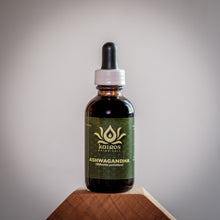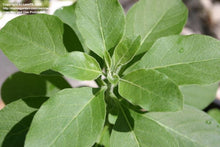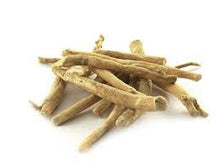Sometimes called Indian Ginseng for its adaptogenic properties. In Hindi Ashwagandha means "horse's smell", referring not only to the smell of a horse, but also to a horse's strength and vigour. Ashwagandha can restore sexual health and improve vitality, and traditionally prescribed as an herbal remedy to strengthen the immune system after an illness. In laboratory experiments with mice and human cells, Ashwagandha inhibited tumor activity without harming normal cells. The Kama Sutra, the primary Sanskrit work on human sexuality, mentions Ashwagandha as an herb that can heighten sexual experience.
Made from fresh-harvested roots.
Bottle: 50ml
-----------------------------------
Would you like to know more? Below you can find an excerpt from our book "Medicinal Perennials to Know and Grow"
A perennial shrub belonging to the nightshade (Solanaceae) family, and native to the dry regions of India, northern Africa, and the Middle East, Ashwagandha can be grown in milder temperate climates as an annual. Start seeds indoors or in the greenhouse in early spring with bottom heat. Germination takes a week or two. When an inch high, prick out the seedlings and pot them up. At the end of spring, plant them a foot or more apart in the hottest spot of the garden. Ashwaganda loves heat and full sun. It tolerates most soils but prefers fast-draining, alkaline ones. The plants appreciate the addition of ground limestone to the soil.
Ashwaganda grows 2 to 4 feet tall, with oval leaves and yellow flowers, the latter eventually producing lantern-like pods enclosing pea-sized berries, which ripen from green to bright red/orange. Once ripe, the berries can then be harvested for the tiny seeds inside.
Because freezing lessens the medicinal power of the roots, they are harvested with the first mild frost. Mulching with straw or leaves can be beneficial. The adaptogenic properties of ashwagandha have been used in India and Ayurveda for nearly 5,000 years. (Herbs that are “adaptogens” normalize and regulate the systems of the body.) A powerful antioxidant, it is known to strengthen the immune system after illness, chemotherapy or surgery. It is often referred to as “Indian Ginseng” because of its similar restorative and rejuvenating properties, although they are botanically unrelated. In Sanskrit, ashwa means "horse"; and gandha "sweat" or "smell of perspiration", referring not only to the smell of the freshly harvested root, but also that the herb has the potential to impart the strength and vigour of a horse.
The Kama Sutra, the primary Sanskrit work on human sexuality, describes ashwagandha as an herb that can heighten sexual experience, restore sexual health and improve overall vitality.
It is highly effective in helping to reduce stress and anxiety, and as an aid in helping with insomnia and for regulating sleep.








